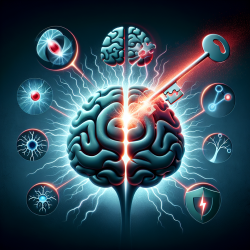As a special education practitioner, understanding the nuances of turn-taking in sign language conversations can significantly enhance your ability to support deaf and hard of hearing (DHH) students. The recent research article, "Acquisition of turn-taking in sign language conversations: An overview of language modality and turn structure," provides invaluable insights that can be implemented in educational settings to improve communication skills among DHH students.
Key Findings from the Research
The research highlights several critical aspects of turn-taking in sign language, emphasizing the importance of visual and manual cues, the developmental trajectory of turn-taking skills, and the unique demands of language development in classroom settings. Here are some key takeaways:
- Visual/Manual Cues: The study underscores the importance of visual and manual cues in facilitating smooth turn transitions in sign language conversations. Practitioners should be aware of these cues and incorporate them into their teaching strategies.
- Developmental Trajectory: Turn-taking abilities develop over time, and while some skills appear early, their full integration into conversational behavior can be protracted. Practitioners should provide ongoing support to help students refine these skills.
- Classroom Dynamics: The classroom setting presents unique challenges for turn-taking, given the multiparty interactions and the need for visual attention management. Practitioners should use explicit strategies to manage students' visual attention and scaffold their participation in conversations.
Implementing Research Insights in Practice
To effectively implement these findings in your practice, consider the following strategies:
- Use Clear Visual Cues: Incorporate clear visual cues such as eye gaze, hand movements, and facial expressions to signal turn-taking opportunities. Ensure that students are aware of these cues and practice using them in conversations.
- Encourage Active Participation: Foster an environment where students feel comfortable taking turns. Use activities that require turn-taking and provide positive reinforcement when students successfully navigate turns.
- Scaffold Visual Attention: Use strategies such as tapping, waving, or moving into the student's line of sight to capture their attention. Gradually reduce these prompts as students become more adept at managing their visual attention.
- Monitor and Adjust: Continuously monitor students' turn-taking behaviors and adjust your strategies based on their progress. Provide individualized support to address specific challenges faced by each student.
Encouraging Further Research
While the research provides a solid foundation, there is still much to learn about turn-taking in sign language conversations. Practitioners are encouraged to engage in further research and contribute to the growing body of knowledge in this area. Consider collaborating with researchers, participating in studies, and sharing your observations and insights.
To read the original research paper, please follow this link: Acquisition of turn-taking in sign language conversations: An overview of language modality and turn structure.










